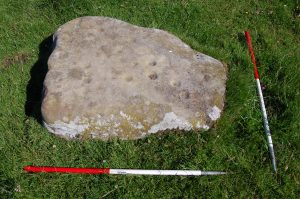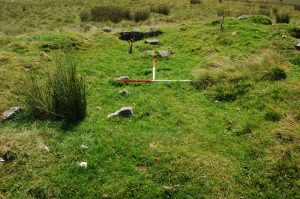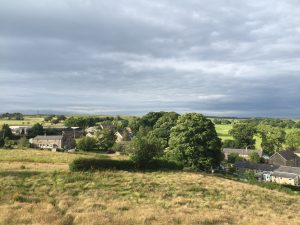As a reward for all their hard work, and to make up for the really wet day of fieldwork on Thursday, we went off to Langholm on Friday to see the Common Riding (http://www.langholm-online.co.uk/), a form of beating the bounds tied in with lots of horse riding and parading of symbols through the town, followed by games and races (both horse and on foot). We watched the impressive parades with the carrying of four symbols – a bannock and fish pinned to a board, a spade with a spray of heather, a floral crown and the most enormous bunch of thistles you will ever see. Most of the town seem to have joined in, all dressed up with the town colours of red and green, carrying bunches of heather on poles. The town brass band and the pipe band were part of it, followed by all the horses and riders which numbered in the 100s. A spectacular site! We also saw the second proclamation of the rights of the town by the cornet, or Master of ceremonies. A good end to the fieldwork part of the project.
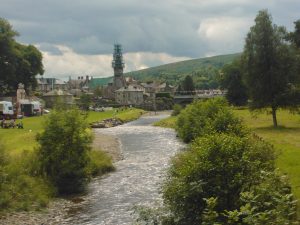
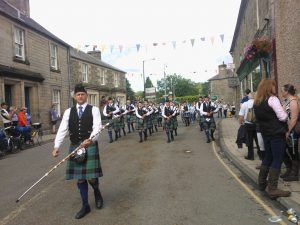
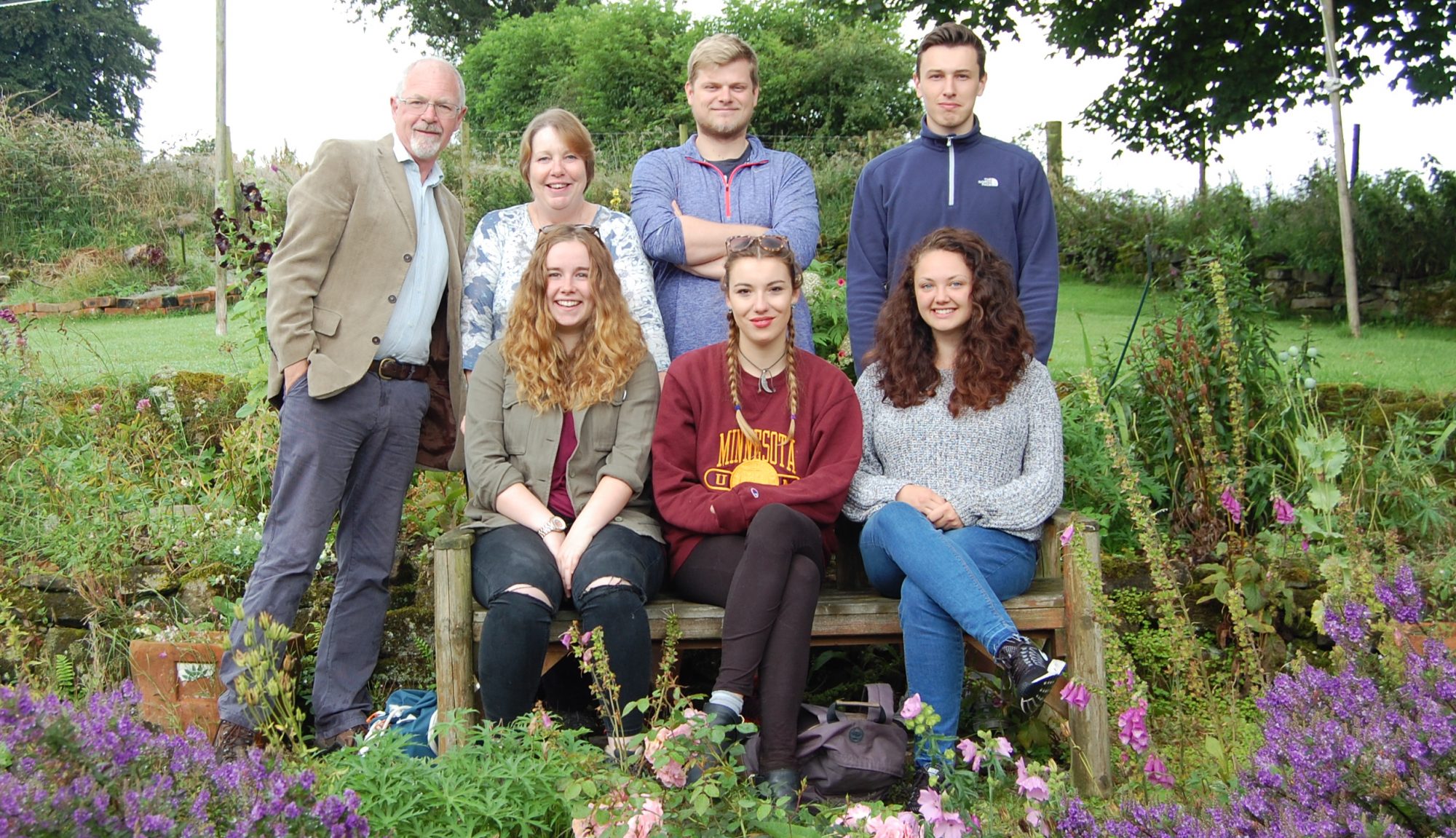
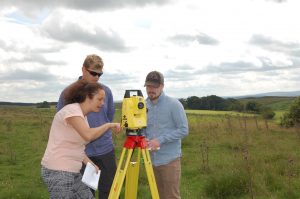
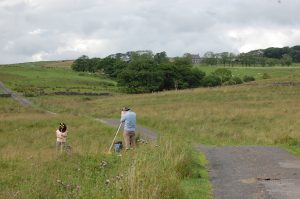
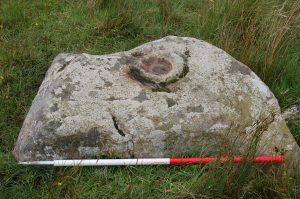
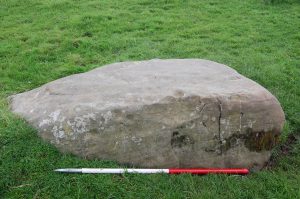
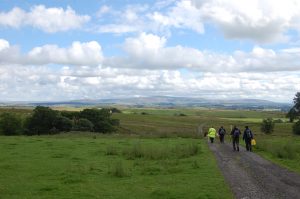
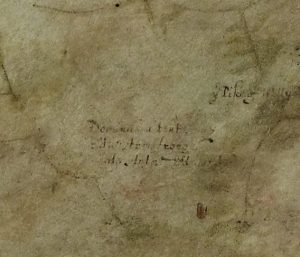
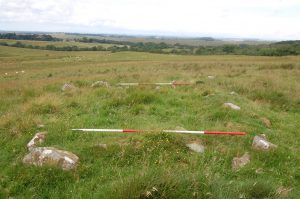
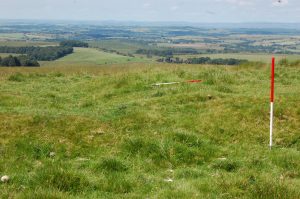
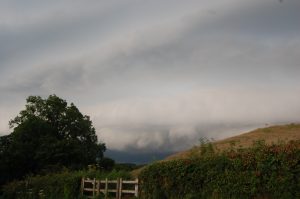 ,
,